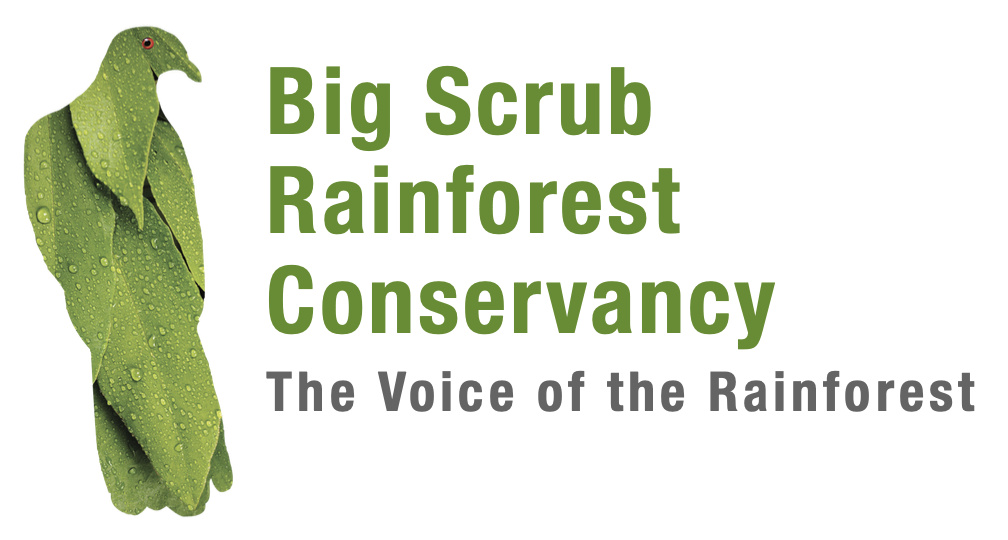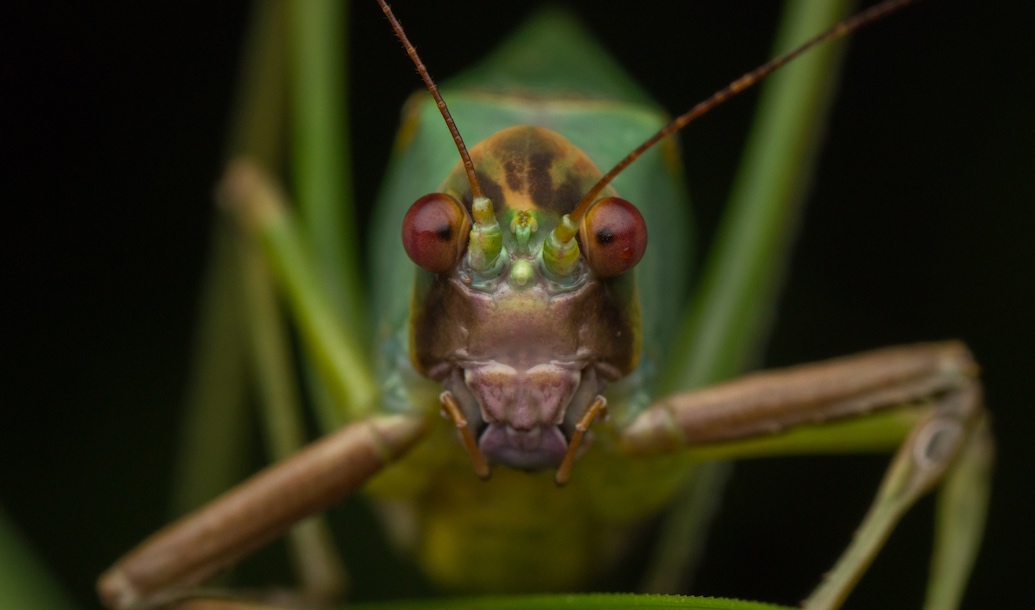Contributed by Jeremy Jones
Image: Naskrecki’s bush katydid, Ozphyllum naskreckii, Minyon Falls. (Copyright Jeremy Jones, Instagram:@jeremycology).
The fauna of the Big Scrub is often heard but rarely seen — this is especially so for its most diverse group of inhabitants — the insects. A summer bushwalk in a Big Scrub remnant can be a deafening experience. Thousands of male cicadas sing in unison, creating a ‘wall of sound’ so powerful it can confuse and repel the birds that eat them. Over a dozen cicada species have been recorded from the Big Scrub, but the actual number present is be to higher. Each species has its own unique call, made only during specific times of the day. For cicadas, like other groups of insects in Australia, many species are yet to be scientifically named.
As darkness fills the forest, the insects that passed the day taking shelter, or utilising their camouflage to avoid detection, venture out into the forest to find food or mates. The sound of the forest changes too, other cicada species take up the night shift, but they are now joined by the katydids — a diverse assemblage of highly vocal insects well represented in Big Scrub. Despite the apparent cacophony, humans are oblivious to many insect’s vocal calls, which can be made at frequencies higher than our ears can detect.
Insects, as tiny creatures in a large world, rely heavily on chemical signals detected through their complex antennae. On a calm summer night, hundreds of chemical signals drift through the forest. To a human nose, this goes unregistered, but an insect’s antennae are highly tuned to few different chemical compounds, allowing them to follow specific scent plumes back to their source — usually food or a mate.
Scents and sounds are not the only signals insects utilise. Spring-time nights in the gullies of the rainforest come alive with the spectacular visual displays of fireflies, which are actually beetles signaling to attract mates. Under the shelter of rocky overhangs, the cold blue lights of glow-worms, which are not worms but fly larvae, serve a more sinister purpose — to lure in prey to be caught on their sticky silken traps. Our local glow-worms and fireflies are unique species found only in the subtropical rainforests surrounding the Tweed caldera.
The Big Scrub is home to other unique and iconic insects, such as the Richmond birdwing butterfly and the endangered pink underwing moth. These species are large, well known and comparatively well studied, but there may well be thousands of other insect species found in the Big Scrub which we don’t yet have names for or know anything about. These tiny and insignificant animals have an important role to play in supporting the functioning of our rainforests, often in unexpected ways.
Most of the Big Scrub flora is pollinated by insects, and insects play critical roles in nutrient cycling and pest control. They are a major source of food for birds, reptiles and mammals. Many of them are found nowhere else. Identifying all of the Big Scrub insects and learning about their life-histories so we can ensure their survival into the future is a monumental task, which will take many years. For now, restoring, rehabilitating and reconnecting the Big Scrub is the best thing we can do to conserve the incredible and unique insect diversity we are custodians of.


